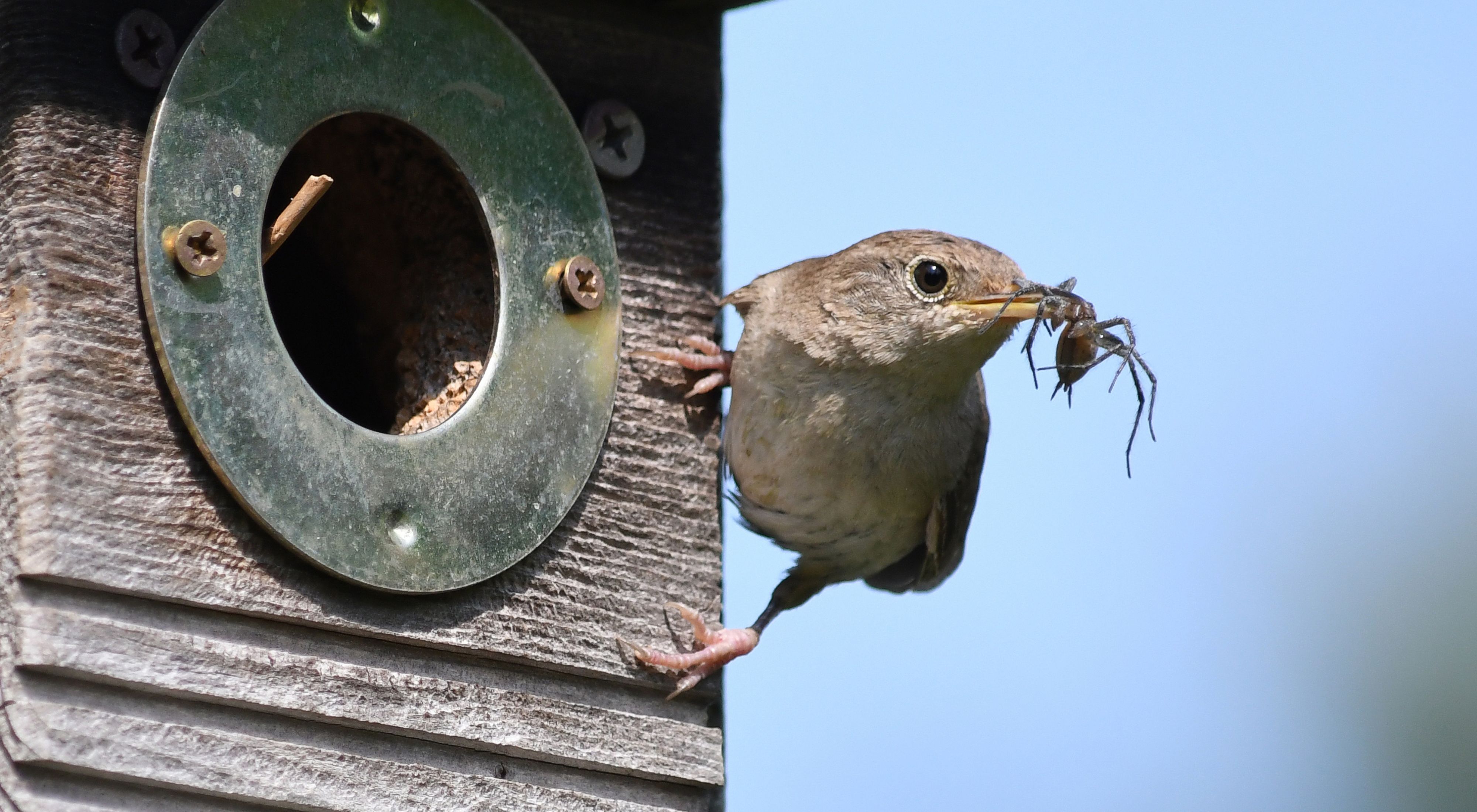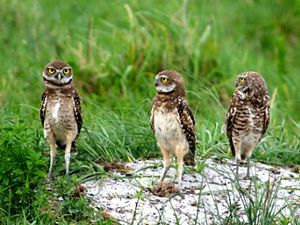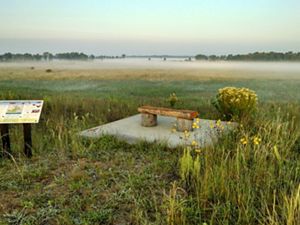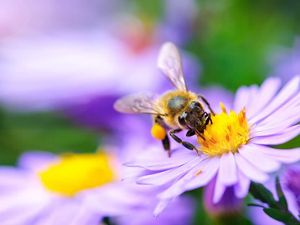Spider Appreciation: from Eek! to Yay!
Did you know that the first week of April is National Be Kind to Spiders Week? To be kind to spiders (that is, to resist all instincts to squish them), one must first appreciate spiders, which admittedly can be hard to do when you are a little nervous or even terrified of them (known as arachnophobia). But there is a lot to love about these eight-legged wonders and less to be nervous about than you might think.
First off, we can start thinking of spiders less as predators that grab and eat things, and rather think of them as prey, eaten by other things. As it so happens, the second most important food source for songbirds (after insects) is spiders! In his 2007 book Bringing Nature Home, Doug Tallamy writes about a study that identified what foods wrens were bringing to their chicks; he found that more than half were spiders. Tallamy reports that ornithologists agree that spiders are an important and critical component of adult birds’ diets and the food that they feed their chicks.
And some bird species don’t just limit their spider use to just food. Hummingbirds not only eat spiders, they also use the fine silk strands in the making of their nests. Goldfinches are known for incorporating spider webbing into their nests as well.
Luckily for birds, there is an amazing variety of spiders in the world. According to the National Park Service, there are nearly 60,000 species of spiders worldwide. In North America, there are approximately 3,400 different spider species. In Indiana, the Department of Natural Resources estimates that there are approximately 400 species of spiders. Of these, most are harmless to humans. Notable exceptions include the brown recluse and the black widow, which can inflict serious harm to humans.
On the Kankakee Sands prairie, some of our most common spiders are the orb weavers, crab spiders, wolf spiders and jumping spiders, all of which sound intimidating but are harmless to humans. Now exactly just what are all these spiders doing on the prairie? Eating insects! The Natural Park Service reports that a single spider can eat about 2,000 insects per year! As a group, spiders consume more insects than birds do.
Quote: Alyssa Nyberg
I’ve learned that simply sitting and observing allows me to understand and predict how a spider might act and react, thus allowing me some comfort with how the scene may play out.
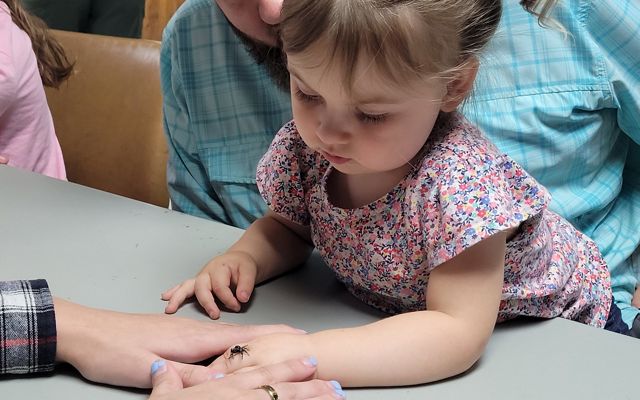
At the Kankakee Sands greenhouse, where it’s warm and cozy this time of the year, we do have a fair number of jumping spiders. Often when taking the plant pots out of storage and setting them up to fill with soil, a little jumping spider will pop out. Jumping spiders are well named in that they do not create webs to catch their prey, but rather they leap and catch their prey with their forelegs.
Jumping spiders used to alarm me greatly! However, I have found that the following tactic has allowed me to appreciate and respect the little jumping spider: I simply sit and watch. When alarmed, most spiders will run a short distance, then they will stop and assess the situation. (That’s when I imagine the spider saying, “Hi!”) It might turn and look left, then turn and look right, and then just settle in to see what will happen next. (And that’s when I imagine us having a little conversation about the weather.) If I do nothing, the spider may eventually get bored and wander off in search of a safe and comfortable place to settle in until it is hungry again.
I’ve learned that simply sitting and observing allows me to understand and predict how a spider might act and react, thus allowing me some comfort with how the scene may play out. And feeling comfortable is important as we lean into spider appreciation. I’ve had so many nice conversations with spiders over the years that now I feel comfortable putting my finger out, allowing it to crawl on me, then taking the jumping spider outside to live its life out in the prairie.
A fun note about our greenhouse is that that along with jumping spiders, we also have visiting house wrens that come in for spider snacks regularly. They sing to us from atop the heater when the doors of the greenhouse are open. Wrens do love to eat spiders!
A great way to spend time with spiders in a safe and educational environment is to attend one of Robin Allen’s family-friendly spider programs. Our family attended one of her presentations several years ago at Kankakee Sands. It was great fun to learn about the spiders and then have the opportunity to view her pet jumping spiders up close, and even hold one if we wanted. Robin’s next outreach event with her adorable pet jumping spiders is during the Animal Outreach Day at Olivet Nazarene University in Bourbonnais, Illinois, later this month. To find out more, visit their Facebook page.
This month as the migratory songbirds are making their way from their overwintering grounds in the South back up to the Midwest, we can remind ourselves that little spiders are here and ready for them, and we can feel good about that! We don’t always need to think of the spiders as scary and predatory. Instead, we can think of them as prey, sustaining the next generation of songbirds. Not only are they not worth squishing, they are worth appreciating!
Nature Notes for March, 2024
The March of the Salamanders
At Kankakee Sands, our wetlands have a great awakening in March. During the day, the tender bright-green leaves of moist soil-loving plants begin to grow, and the many aquatic insects—such as fairy shrimp, dragonfly larva and damselfly larva—swim in the cool waters. Wetlands attract turtles and frogs, not to mention several species of ducks. In the damp mud are distinct tracks of deer, raccoons, weasels and cranes.
And at night, there is the slow methodical march of salamanders making their way to the wetland after their long winter slumber. What’s a wetland, you ask? Wetlands are places filled with water (seasonally, year-round or intermittently). Bogs, swamps, fens and marshes are all wetlands.
Wetlands are safe havens for a lot of wildlife, and our salamanders rely on them for survival.
If you’ve never seen an adult salamander, you are in for a treat! Salamanders are cute: they look a bit like a chunky, short-limbed, broad-headed lizard. But before you consider touching one, know that they are slimy. Salamanders rely on moist skin to avoid desiccation and death. It’s no wonder that salamanders like to live in moist places, such as under leaves, rocks and fallen logs, and in underground burrows and tunnels. It is this time of the year, March, that they are crawling out from under those places as they emerge from their winter hibernation locations.
The adult salamanders are making the march to wetlands to breed. After mating, females attach fertilized egg masses to submerged vegetation, sticks and logs, and then the females return to land. The larvae are left to their own devices to develop and hatch.
Quote: Alyssa Nyberg
ILPA’s Indiana Wetlands Challenge invites you, your friends and family to visit and learn about Indiana wetlands.
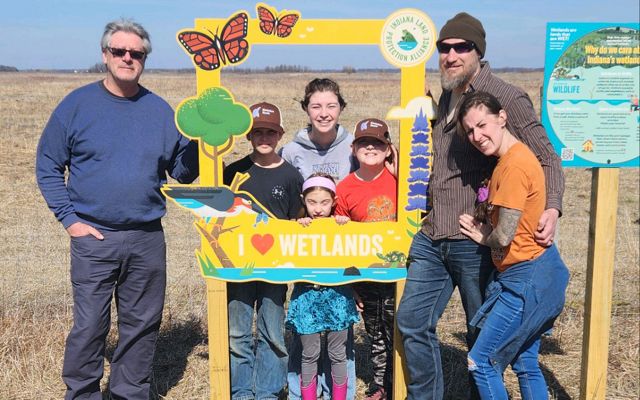
Young salamanders are fully aquatic. They have long, strong tails for swimming and shortened appendages. They have gills on either side of their head that assist with breathing. As they age, they develop lungs for living on land and eventually lose the gills.
Salamanders, regardless of their age, are carnivorous. Adult salamanders feed on things that you might expect to find in wet places: slugs and snails, worms, spiders and a wide variety of insects. Young salamanders feed on aquatic invertebrates, small tadpoles and sometimes even small salamanders!
Ephemeral wetlands, which fill in the spring and dry up in the summer, are of most benefit to the salamanders. Ephemeral wetlands are typically devoid of fish, allowing a greater chance of survival for the salamander, whose predators include fish and birds. But wetlands that are present all year long are also beneficial.
A salamander common to the Kankakee Sands is the Eastern tiger salamander (Ambystoma tigrinum). They are typically seven to 10 inches in length and dark in color with yellow spots of varying shapes and sizes. Eastern tigers are some of the most common salamanders in Indiana and all across the United States. They can be found in forests, prairies, meadows and even urban areas as long as there is a wetland where they can breed.
Salamanders are one of the many good reasons to protect our wetlands. Wetlands once covered 25% of Indiana, but sadly we're down to just 3.5%. Even small, isolated wetlands are important, often serving as the only refuge for several species of amphibians, such as salamanders, as well as nesting locations and migratory stopovers for birds. In fact, according to the U.S. EPA, approximately 50% of migratory bird species depend on wetlands!
The Indiana Land Protection Alliance’s (ILPA) Indiana Wetlands Challenge invites you, your friends and family to visit and learn about Indiana wetlands. By visiting these special places, you can learn how you can help land trusts and partners protect them. Learn more about this fun Indiana Wetlands Challenge.
As part of the wetlands challenge, we have one of ILPA’s photo frame boards here at Kankakee Sands. Stop by this March and take a photo at the photo frame board with a Kankakee Sands wetland off in the distance. You can show the world that you love wetlands and all the amazing creatures, including salamanders, in them!
